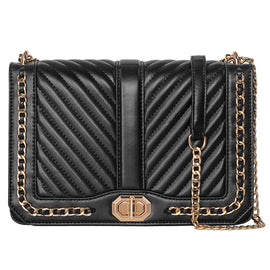Understanding Slow Fashion: A Sustainable Approach to the Fashion Industry
Slow fashion, often described as the opposite of fast fashion, represents a shift toward more sustainable and ethical practices in the clothing industry. It emphasizes thoughtful production and consumption, prioritizing quality, sustainability, and fair treatment of workers over the rapid turnover and disposable culture promoted by fast fashion. To answer the question, “what is slow fashion?”, it is a movement that seeks to transform the way we create and consume clothing, ensuring long-term benefits for people and the planet.
Slow Fashion Definition and Its Origins
The slow fashion definition can be summarized as an approach to fashion that values quality over quantity, focusing on ethical production, sustainability, and timeless design. This movement emerged as a response to the rise of fast fashion in the late 20th century. Fast fashion's history is rooted in the desire to produce trendy clothing quickly and cheaply, often at the expense of ethical labor practices and environmental health.

The term "slow fashion" was introduced by Kate Fletcher, a professor at the Centre for Sustainable Fashion. Drawing inspiration from the Slow Food movement, Fletcher envisioned a system of clothing production that respects natural processes, supports ethical practices, and encourages consumers to invest in garments designed to last.
Several milestones and key figures have driven the slow fashion movement forward:
- Kate Fletcher: Her foundational work helped shape the fashion slow ethos, promoting eco-conscious materials, ethical manufacturing, and design longevity.
- Pioneering Brands: Companies like Eileen Fisher and Patagonia, which began emphasizing sustainability in the 1980s and 1990s, demonstrated that affordable non-fast fashion brands could succeed without compromising ethical principles.
- Livia Firth and the Green Carpet Challenge: By incorporating slow fashion into celebrity culture in 2009, this initiative raised awareness of sustainable and ethical clothing options, helping mainstream the movement.
Core Principles of the Slow Fashion Movement
The slow fashion movement is rooted in principles that challenge the fast fashion model and aim to redefine the industry:
1. Sustainability
Slow fashion advocates for environmentally friendly practices, including the use of renewable materials, waste reduction, and energy-efficient manufacturing. It rejects the disposable culture encouraged by bad fashion fads and promotes durable clothing designed for long-term use.
2. Ethical Production
The movement prioritizes fair treatment of workers, ensuring safe labor conditions and fair wages. It also emphasizes local sourcing to support communities and reduce the environmental costs of transportation. Unlike the exploitative practices seen in fast fashion’s history, slow fashion aligns with ethical standards throughout the supply chain.
3. Quality and Timeless Design
One hallmark of slow fashion is its focus on crafting high-quality garments that transcend fleeting odd fashion trends and bad fashion fads. These timeless pieces encourage consumers to build sustainable wardrobes while reducing waste.
Fast Fashion vs. Slow Fashion
The debate between fast fashion vs slow fashion highlights their stark differences in values and practices. Fast fashion emphasizes speed, cost-efficiency, and high-volume production to meet the demand for ever-changing trends. In contrast, slow fashion challenges this model by promoting:
- Fewer, high-quality items: Encouraging consumers to invest in timeless, durable pieces rather than disposable clothing.
- Sustainable practices: Incorporating eco-friendly materials and reducing the carbon footprint associated with production.
- Ethical labor: Ensuring fair wages and safe working conditions for all workers.
By addressing the flaws in fast fashion’s history and culture, slow fashion seeks to create a more sustainable future for the industry.

The Global Impact of Slow Fashion
The slow fashion movement is gaining momentum as awareness of its benefits grows. Consumers are increasingly drawn to affordable non-fast fashion brands that offer transparency, sustainability, and ethical practices. At the same time, designers are finding innovative ways to merge eco-consciousness with style, ensuring that slow fashion appeals to modern sensibilities.

Slow fashion also aligns with circular economy principles, reducing waste by extending the lifecycle of garments through upcycling, recycling, and repair. This approach directly addresses the environmental damage caused by the fast fashion industry.
For businesses, adopting slow fashion principles offers a competitive advantage. Brands that embrace sustainability and ethical practices gain the trust and loyalty of eco-conscious consumers while standing apart from the harmful practices of fast fashion.
Conclusion
What is slow fashion? It’s a cultural shift that redefines how we produce and consume clothing. By emphasizing sustainability, ethical production, and timeless design, it provides an alternative to the disposable culture of fast fashion.
The slow fashion movement challenges the rapid, trend-driven cycles of fast fashion, encouraging thoughtful choices that benefit both the environment and society. As consumers and brands embrace this movement, slow fashion paves the way for a more responsible and sustainable industry.
Whether through rejecting odd fashion trends, investing in affordable non-fast fashion brands, or questioning the practices of fast fashion, individuals can help shape a future where clothing is valued for its quality, craftsmanship, and positive impact.













